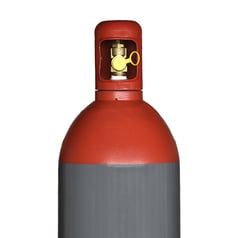you are currently visiting our website in a browser that is not supporting our website.
Hydrogen
Hydrogen is usually produced by steam-reforming natural gas or other fossil fuels
Hydrogen can also be produced from electrolysis, in which water is converted into hydrogen and oxygen under the influence of electric current. Several plants in the Netherlands, France and Germany ensure the production of the European requirements of the various Linde companies. Liquid hydrogen is produced at our Ingolstadt plant in Germany. It is liquefied at a temperature of -253 °C and is transported in liquid form throughout Europe.
Safety information
What is hydrogen?
Hydrogen is an odorless, colorless and highly flammable gas. Hydrogen is usually produced by steam-reforming natural gas or other fossil fuels. It can also be produced from electrolysis, in which water is converted into hydrogen and oxygen under the influence of an electric current.
Hydrogen technology
With hydrogen technology, The Linde Group is a supplier and developer of a new, reliable energy source. As a leading European gases company and the world's largest manufacturer of hydrogen production units, Linde has supplied hydrogen gas for a wide range of applications since 1910. Production of hydrogen, for example, for the chemical, petrochemical and metal industries.
Linde has traditionally maintained a very close working relationship with science, research bodies and the development industry. This contributes to continuous progress and ever new innovative applications. In addition to the latest applications of hydrogen gas, we also develop innovative methods for storage and work closely with leading car manufacturers in this regard. Hydrogen refueling, for example, is an important topic there.
What is hydrogen used for?
Hydrogen can be used for many purposes, such as as a carrier gas in gas chromatography, as a reducing agent, in soldering precious metals and in gas detection equipment. In addition, it is used in the chemical industry to make ammonia and methanol. Hydrogen can also be used to remove sulfur from fuels. Today, the focus is on using hydrogen as a pollution-free fuel. Hydrogen can make a major contribution to reducing CO2 emissions: even up to almost 100%, if it is produced emission-free, for example from solar or wind energy, or from sustainable biomass or biogas.





